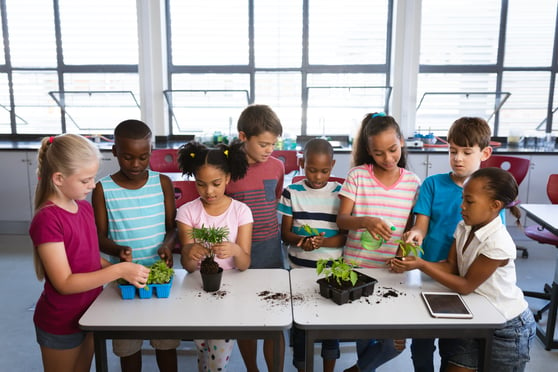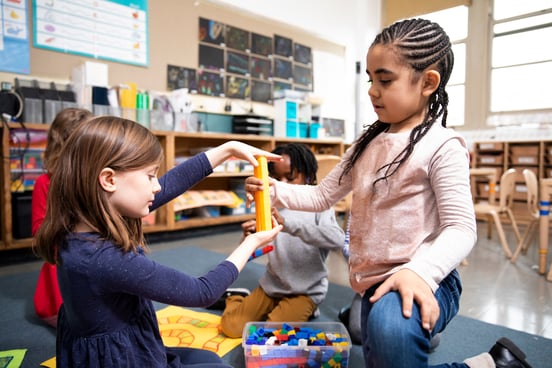
5 Easy Math Engagement Strategies for the Classroom
The news headlines are daunting. Math scores are down. School districts are scrambling to turn things around. And...
ALI Staff | Published December 07, 2022
STEM and cooperative learning strategies go hand-in-hand. If cooperative learning is the teaching method to engage students, teach collaboration, and help build social and communication skills, then STEM provides the actual activity.
Using STEM activities within a cooperative framework gets students excited to learn and helps build important skills that go beyond subject knowledge. It’s a match made in education heaven.
Without further ado, let's look at cooperative learning and how to use it in your classroom!

What is cooperative learning?
Cooperative learning is a form of collaborative learning, where students are able to work together to look at a specific problem or complete a specific task.
With cooperative learning groups however, there’s often a little more structure to the activity. Students will work as a group in ways that help maximize not only their own learning, but that of their peers.
This strategy makes the whole group responsible for completing the objectives of the assignment, and it’s this structure that aligns more perfectly with STEM-based activities, and even better, helps keep students on task for STEM-based learning.
Some essential skills developed during cooperative learning include:
Cooperative learning provides an easy opportunity for students to learn through face-to-face interaction and group projects.
Students experience taking on a specific role within a group, dealing with different personalities, and working together to complete a task. They gain a better understanding of accountability and how proper communication works wonders.
Students in this learning environment also serve as resources for each other. Students below grade level, or simply struggling with the subject matter, begin to learn from their peers, building confidence to participate because they better understand what they need to know.
What’s essential to make this work is creating student groups that maximize interaction. It’s about mixing up learning levels and academic prowess so those more hesitant to engage feel more compelled to do so.
Grouping students who are alike in learning levels or willingness to participate will create an imbalance in the groups and deny some students access to learning from and with their peers.
When students work in a collaborative environment, they’re focused on shared goals. This enables them to discover solutions that benefit everyone in the group.
Since STEM topics can get more complex as you go, providing a cooperative setting to parse them out and learn makes it easier for every student to reach more advanced learning goals.
By maximizing the learning capabilities of the entire group, the whole classroom comes away with more knowledge in both practical STEM subjects and in essential soft skills like problem-solving, communication, time management, and more.
Using informal cooperative learning -- where students come together in a temporary group to achieve a goal – is an ideal way to collectively open the door to STEM.
Students more adept in these complex areas of learning inadvertently help others comprehend through the group dynamic. It helps students focus on what they need to know and actively engages them.
As important as it is for students to understand the practical uses for STEM subjects in everyday life — like learning about the drag coefficient by designing cars to get blown across the floor with a fan — being able to access them through a group dynamic develops skills upon skills which can aid students in many future endeavors, both academic and professional.
Whether you’re teaching a lesson on science, technology, engineering, or math, all STEM activities can work within a cooperative learning framework if you have the right set-up. To do this, it’s best to begin with a group.
For an extra learning bonus, you can incorporate real-world scenarios into your activity, giving students a chance to use some problem-based learning as well. This helps get their creative juices going even as they think through more technical problems.
Placing STEM-based learning in the right environment can really make a difference, but when it comes to cooperative learning strategies, there’s a lot of information out there.
For some help setting up your classroom, or even some inspiration for more short-term collaboration, STEMscopes cooperative learning white paper can help you create real-world experiences perfect for collaboration.

The news headlines are daunting. Math scores are down. School districts are scrambling to turn things around. And...

Math assessment in California is changing. What used to be a compliance exercise or reporting tool is now becoming a...

You know the moment: a student’s eyes light up when the science experiment fizzes or the math puzzle helps them...